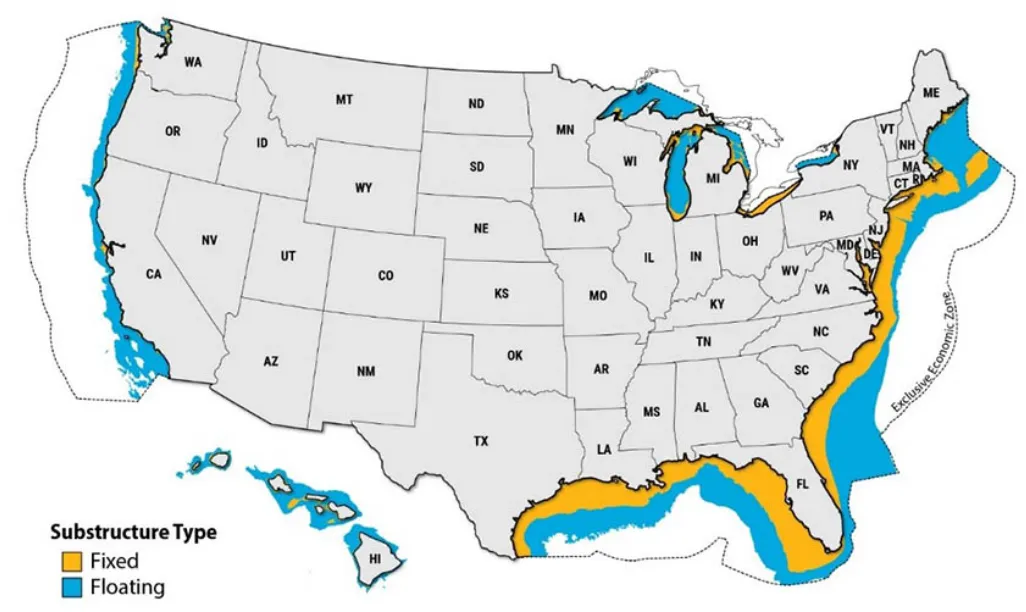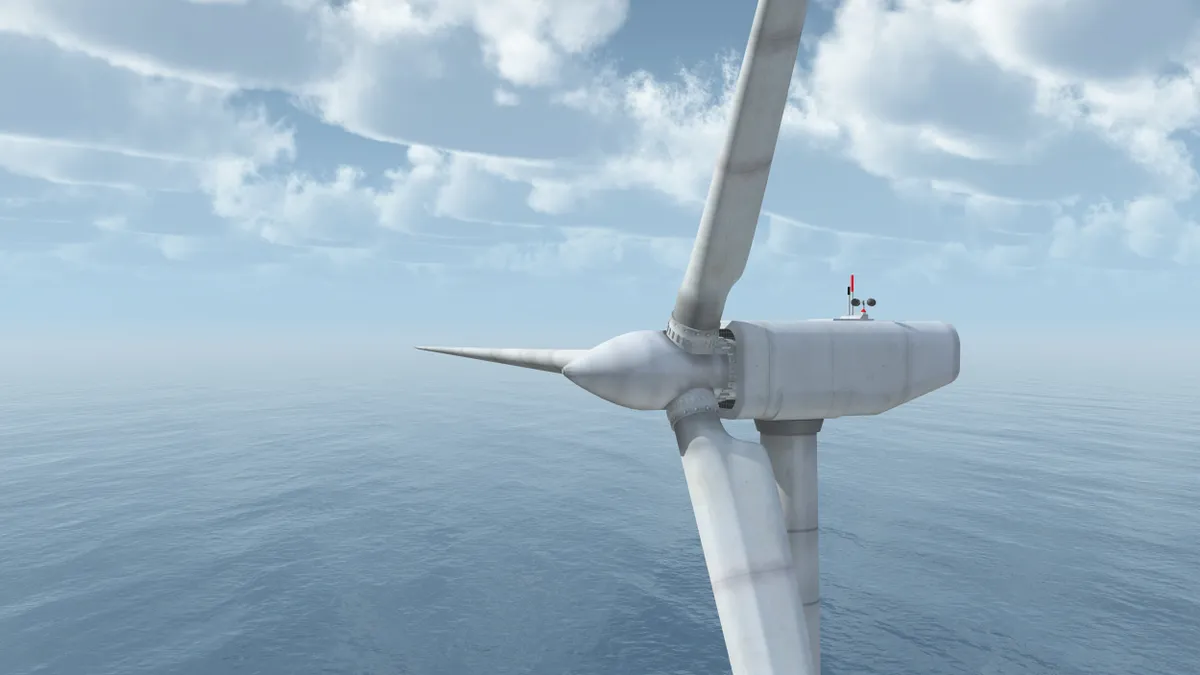Dive Brief:
- The Biden administration on Thursday launched floating wind turbine initiative that includes leasing enough deep-water acreage to support 15 GW of floating offshore wind capacity by 2035.
- The administration also set a goal of cutting floating wind farm costs by more than 70% to $45/MWh by the middle of the next decade through the Floating Offshore Wind Shot effort.
- Clean energy advocates said the initiative would boost offshore wind development. “Paired with the recently enacted Inflation Reduction Act, these targets will dramatically reduce costs for offshore wind development, allowing deployment of clean energy at the scale needed to take action to address climate change,” American Clean Power Association CEO Heather Zichal said in a statement.
Dive Insight:
There is about 1,500 GW of fixed-bottom offshore wind potential in the United States and 2,800 GW of floating offshore wind potential, according to a study by the National Renewable Energy laboratory.
However, only about 40 GW of fixed-bottom offshore wind is under development in the United States and 0.1 GW of floating capacity has been deployed globally, according to the Biden administration.
While the U.S. has been slow to develop fixed-bottom offshore wind, the Biden administration aims to be a leader in floating offshore wind technology by building on its previous goal of adding 30 GW of offshore wind by the end of this decade.
The Floating Offshore Wind Shot, led by the departments of Energy, Interior, Commerce and Transportation, aims to slash the cost of floating wind technology.
“Achieving this cost target will require focused research, development, and demonstration to catalyze continued cost reductions, with a focus on manufacturing, engineering, and continued increases of offshore wind turbine capacity,” the White House said.
Bringing floating offshore wind technology to scale will unlock opportunities for offshore wind power off the coasts of California and Oregon, in the Gulf of Maine and elsewhere where the water is too deep for fixed-bottom wind farms, according to the White House.

Clean energy advocates in California, which last month adopted a 25 GW offshore wind goal, praised the moves by the Biden administration.
“A moonshot target, with interim goals and tangible, targeted research and development funding are all key parts of the offshore wind puzzle that need to be put into place to help stave off the worst impacts of global warming," Laura Deehan, Environment California state director, said in a statement.
The administration’s floating offshore wind target provides long-term regulatory certainty that will drive investments toward manufacturers, ports and shipbuilders, Liz Burdock, Business Network for Offshore Wind president and CEO, said in a statement.
“The future of offshore wind lies in deeper waters requiring floating technology, and this comprehensive plan sets the U.S. on a path to become a global leader in this cutting-edge industry and a major exporter of expertise and supplies,” Burdock said.
The Department of Energy on Thursday said it is offering nearly $50 million in research, development, and demonstration funding for floating wind technology, partly through the Bipartisan Infrastructure Law.
The funding includes $31 million for the second phase of an Advanced Research Projects Agency-Energy program called Aerodynamic Turbines, Lighter and Afloat, with Nautical Technologies and Integrated Servo-control, or ATLANTIS.















